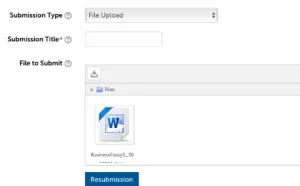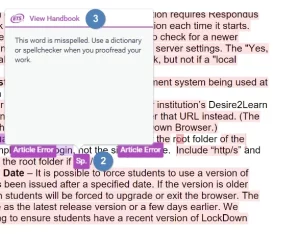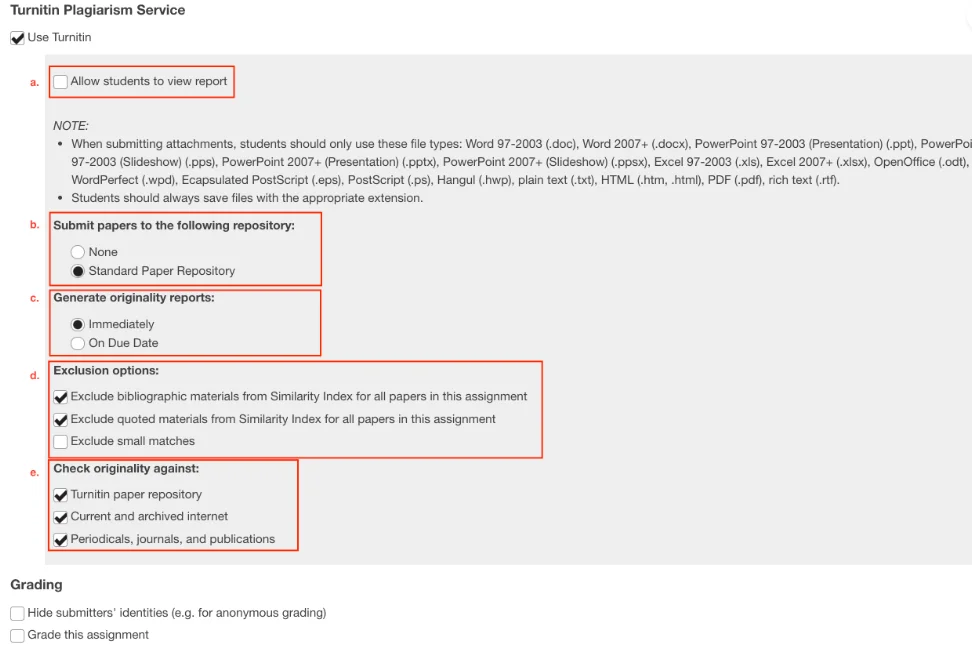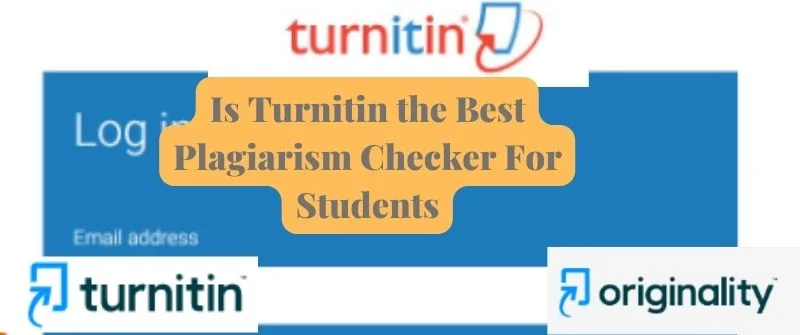In today’s world of competition, students always look for ways to stand out and excel in their studies. Students want to get better grades than their peers and professors.
Students want to get better job offers than everyone they know. They want to ensure that their essays don’t get plagiarized.
However, plagiarism isn’t just an issue for college students — it’s for anyone writing a paper or making a speech.
Is Turnitin the best Plagiarism Checker?
Turnitin is among the popular plagiarism checkers used by academic institutions worldwide. It has a sophisticated algorithm that can identify potential cases of plagiarism.
Turnitin is the best plagiarism checker because it is highly reliable, has accurate scores, and is easy to use for both students and instructors. Turnitin is largely preferred because it has multiple features that make it a valuable tool for detecting plagiarism. It can compare submitted work against a vast database of existing internet sources and academic literature.
However, it may not necessarily be the “best” plagiarism checker for every situation. Other plagiarism checkers like Grammarly and Copyscape offer different pricing models and features better suited for certain use cases.
Generally, the choice of plagiarism checker depends on your specific needs. Some variables to consider are accuracy, ease of use, speed, and cost.
What makes Turnitin the best Plagiarism Checker
1. Accurate

Turnitin uses a complex algorithm to identify even the slightest plagiarism in a submitted document.
It can detect paraphrasing and manipulation of sources, making it hard for students to deceive the system.
Turnitin updates its database with new academic literature and internet sources regularly. It ensures that its results are up-to-date and comprehensive.
These features help ensure that Turnitin is reliable and accurate. The accuracy is seen when it assigns Turnitin similarity scores to highlight the match per every source.
2. Repository
Turnitin has a vast database of sources that includes more than 70 billion web pages. In addition, it has over 1.3 million scholarly journals, books, and articles.

Turnitin uses this comprehensive database allows to identify instances of plagiarism.
Moreover, Turnitin’s repository is a useful tool for educators. They use it to teach students proper citation and referencing practices, making it a valuable tool for promoting academic integrity.
3. Good for Academics
Turnitin is important in academic settings where intellectual honesty is paramount. Turnitin’s database of sources includes a wide range of scholarly literature.
It is an invaluable resource for educators looking to teach students about proper citation and referencing practices.
Turnitin comes with learning management systems and assignment submission platforms making it easy for educators to use and incorporate into their existing workflows.
4. Students use it
Students also find Turnitin an asset because it helps ensure their work is original and properly cited. Students use it to identify instances of plagiarism and correct them by removing plagiarized text from their papers before submission.
Feedback and similarity reports assist students in learning about proper citation and referencing practices. This improves their academic skills and promotes academic integrity.
The scanner is accessible as students can use it easilly. Some can use Turnitin for free through its trial method or free access given by the school.

5. Universities use it
Universities use Turnitin to promote academic integrity and maintain high standards of intellectual honesty.
They check student work for plagiarism and deter students from engaging in academic misconduct.
Also, Turnitin’s database help universities identify instances of contract cheating. This enables universities to maintain a level playing field.
6. Easy to use
Turnitin’s user-friendly interface is easy to use, making it a popular choice among educators and students. One can access it through a web browser.
It has an integration with learning management systems to streamline the submission process.
Turnitin’s feedback and similarity reports come clearly and intuitively, enabling educators and students to quickly and easily identify potential instances of plagiarism.
These features make Turnitin software a simple and effective tool for preventing plagiarism and promoting academic integrity.
7. Scans both Online and Offline Sources
Turnitin can scan online and offline sources. Turnitin’s database includes more than 70 billion web pages. In addition, it has over 1.3 million scholarly journals, books, and articles.
This great database ensures that Turnitin identifies instances of plagiarism.
Still, Turnitin scans offline sources like academic papers and other documents using its OCR (Optical Character Recognition) technology.
8. Gives Grammar Feedback

Turnitin also provides grammar feedback. Turnitin’s Grammar-checking feature offers feedback on spelling, grammar errors, and punctuation helping students to improve the clarity and quality of their writing.
This feature is resourceful for non-native English speakers who struggle with complex English grammar rules.
Turnitin helps students to improve their academic skills and produce higher-quality work by providing targeted feedback on grammar and writing.
This feature saves time for educators who can focus on offering extra substantive feedback.
How Turnitin compares with other plagiarism scanners
Turnitin is a plagiarism detection tool widely used in educational institutions. It has the edge over other plagiarism scanners. Here are some of them:
- Wide range of sources: One of Turnitin’s biggest advantages is its extensive database of sources. The database includes academic journals, books, and other online resources. Turnitin can detect plagiarism from various sources, making it more reliable than other plagiarism scanners.
- Easy to use: Turnitin is user-friendly hence easy to use. Its interface is intuitive. Furthermore, the tool is straightforward, making it easy for students, instructors, and researchers to use effectively.
- Multiple file formats: Turnitin supports formats like Microsoft Word, PowerPoint, PDF, and HTML. The users can submit their work in the format that they prefer.
- Advanced matching algorithms: Turnitin has advanced matching algorithms to identify similarities between the submitted work and other sources. These algorithms are constantly updated and refined to ensure accuracy and reliability.
- Feedback and grading features: Turnitin gives feedback and grading features that help instructors provide detailed feedback on students’ work. Such a feature helps students understand where they need to improve and how to avoid plagiarism.
- Customizable settings: Turnitin enables users to customize the settings to meet their needs.
- For instance, tutors can exclude certain sources or adjust the sensitivity of the plagiarism detection algorithm.

While Turnitin has many advantages, there are also some potential downsides.
One common complaint is that Turnitin can be expensive for smaller institutions or individual users.
Some students and educators have also expressed concerns about the privacy implications of submitting their work to a third-party scanner.
Typically, Turnitin is a reliable tool for detecting plagiarism and promoting academic integrity.
While other plagiarism scanners are available, Turnitin’s extensive database, advanced algorithm, and additional features make it a strong choice for educators and institutions.
